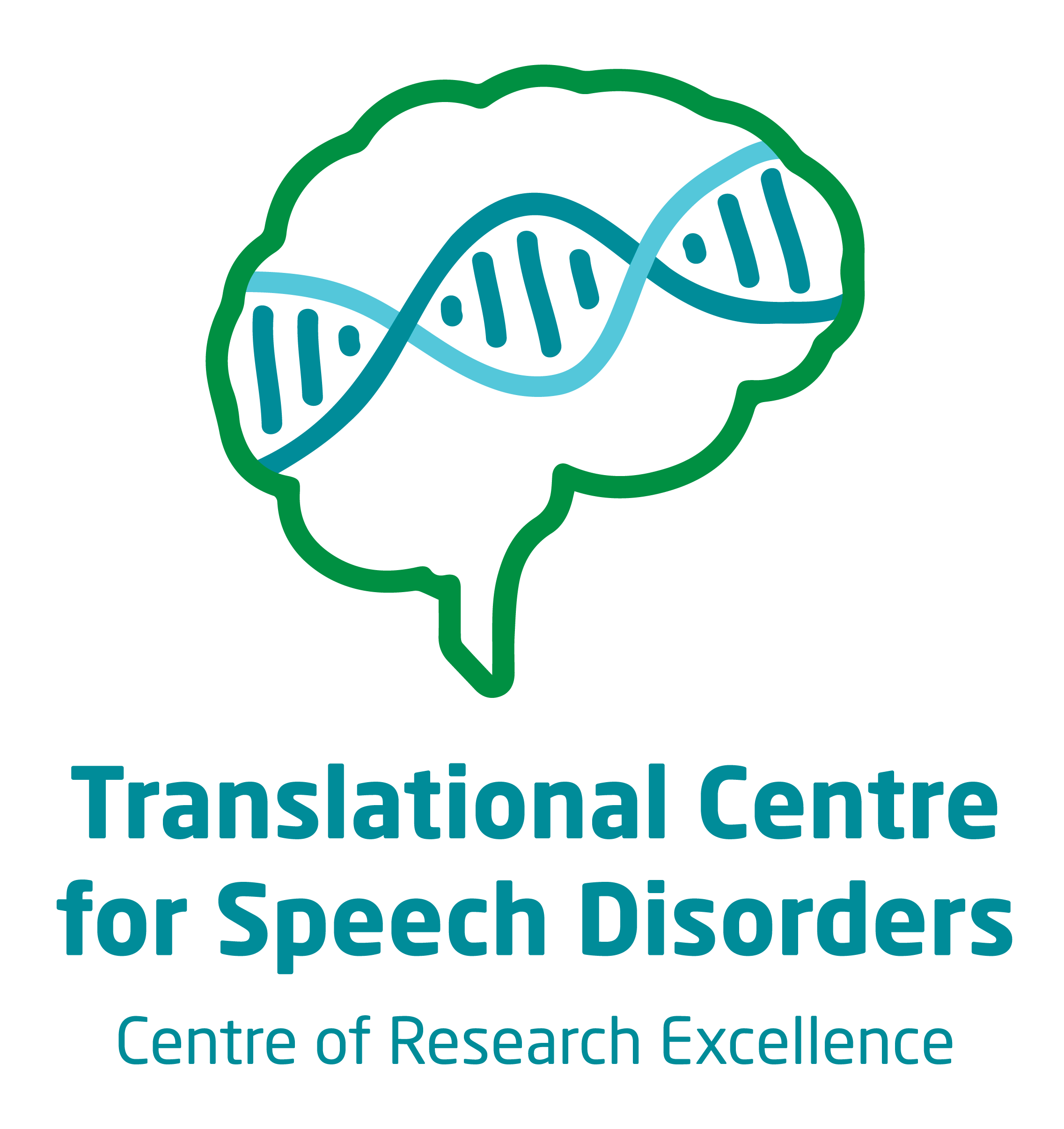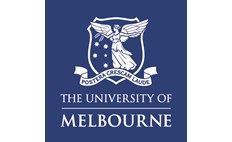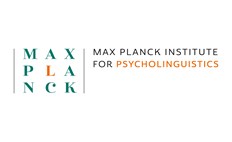BRPF1
What is BRPF1-related disorder?
BRPF1-related disorder occurs when there is a change or alteration (like a spelling mistake) to the BRPF1 gene, meaning the gene loses or alters its usual function. Changes to the BRPF1 gene can lead to particular characteristics in an individual with BRPF1-related disorder.
BRPF1 is a gene on chromosome 3p25.3. The BRPF1 gene encodes for protein called bromodomain and PHD finger-containing protein 1. This protein plays an important role in different developmental processes, particularly in the central nervous system (e.g., the brain).1
To date BRPF1-related disorder has been reported over 60 individuals in the scientific literature.2 For some cases BRPF1-related disorder has occurred sporadically, or ‘out of the blue’ (de novo), in other cases the BRPF1 gene change has been inherited from a child’s mother or father.2,3
Contact
For further information, do get in touch with the CRE Speech and Language research team at:
Email: geneticsofspeech@mcri.edu.au
Phone: (03) 9936 6334
Frequently asked questions
Some individuals with BRPF1-related disorder have:2
• learning difficulties/intellectual impairment or disability: most commonly mild-moderate intellectual disability, some individuals are severe, and some individuals have average to low average cognitive ability.
• recognizable facial features (e.g., ptosis)
• vision impairment
• microcephaly (small head)
• brain malformations identified on magnetic resonance imaging (MRI)
• seizures
• infant feeding difficulties
• fine and gross motor impairment
• hypotonia (low muscle tone)
• autism
• other medical conditions have been observed, although not frequently, such as renal (kidney) conditions, and gastrointestinal problems2
In one study of 15 individuals with BRPF1-related disorder all assessed individuals had a speech and/or language disorder.2 Receptive (understanding) and expressive language skills ranged from severely impaired to average. Likewise, social communication skills and literacy skills were severely impaired in some, and with most individuals sitting in the moderately impaired to average range.
Speech disorders were common, with 7 out of 9 assessed individuals presenting with one or more speech disorder/s.2 Phonological delay and disorder were most common. Two individuals had CAS, which is very rare in the general population, indicating a higher prevalence of CAS in BRPF1-related disorder than the general population. A few individuals also had altered resonance when speaking (e.g., hypernasal speech).2
Out of 15 individuals with BRPF1-related disorder speech milestones were slightly delayed. Some individuals (33%) said their first words at 12-months-old which is in line with typical development. The remainder of the cohort all said their first words after 12-months-old aside from one individual who had not said their first words at 15-months-old. All individuals older than 2-years-old had begun combining words in line with typical development at 2-3-years-old. These slightly delayed milestones necessitated the use of single Key Word Signs to communicate, e.g., signing ‘more’, or ‘help’.
There have been no studies to date that track how communication development changes over time for individuals with BRPF1-related disorder. In one study, there were two adults with BRPF1-related disorder. One adult had completed a diploma after completing high school and had full-time employment, and the other adult was studying at collegue.2
Depending on the individual child’s needs and abilities, some may attend mainstream schools with or without additional classroom support, whilst others may attend special development schools. Recommendations for the most appropriate school setting may vary from country to country. Paediatricians and allied health professionals can assist with ensuring appropriate community and educational supports are in place to support individuals and their families. In a cohort of 15 participants with BRPF1-related disorder 3/15 participants attended specialist education settings, with most participants attending mainstream education settings.2
Currently, interventions are specific to an individual’s communication needs. Individuals with BRPF1-related require a speech pathology or speech therapy assessment to ensure tailoring of best-evidenced interventions to the individual’s profile, as many individuals experience speech and/or language disorders. Speech sound development and language abilities should be assessed by a speech therapist if an individual has delayed or unclear speech to determine the nature of a child’s communication strengths and challenges and how to best support their needs and development. Many countries/states provide early intervention programs where speech therapy may be provided by government programs, educational programs, private practices, or a combination of these depending on your location. Families can seek advice from local practitioners about the services available to them in their region.
Speech development is delayed in some individuals with BRPF1-related disorder. Additionally, some individuals may experience difficulty being understood with speech alone, due to the presence of speech disorders like CAS. For these individuals, augmentative and alternative communication (AAC) may be useful, such as sign language, communication boards or books, or speech generating devices (e.g., an AAC application on an iPad®). AAC does not hinder the development of speech, so should be implemented as early as possible to support an individual’s communication.4
Considering the high-incidence of CAS in individuals with BRPF1-related disorder, compared with the general population, it is important to consider if they have CAS and thus require tailored CAS intervention. Currently there are a number of treatments for CAS, such as the Nuffield Dyspraxia Programme version 3 (NDP-3) and the Rapid Syllable Transition Treatment (ReST) which are supported by the highest level of evidence at present.5
Due to the high incidence of literacy challenges, alongside phonological difficulties, it is important that individuals with BRPF1-related disorder receive systematic and intensive literacy supports to learn to write and read.2
Assessment/evaluation
Important domains for a speech pathology assessment include:
• Speech production skills: to evaluate for specific speech diagnoses (e.g., CAS, phonological disorder)
• Expressive and receptive language skills
• Social/pragmatic language skills
• Feeding and swallowing abilities, particularly in infancy
• Literacy skills, such as phonological awareness, reading and writing
The types of assessment tools used will vary depending on the child’s individual profile and developmental age. Assessment may be required at an initial diagnosis and throughout childhood and adolescence. The goal of assessment will be to understand the nature and severity of speech and language challenges, then make recommendations for appropriate therapies when needed.
Therapy/intervention
There is no research on speech and language interventions that are specifically designed for children with BRPF1-related disorder. Speech and language interventions for children with BRPF1-related disorder are currently guided by the child’s individual profile and the best evidence for speech and language disorders more generally, and include:
If an individual has CAS, evidence-based treatments for CAS are high-intensity, with at least weekly and sometimes multiple weekly speech therapy sessions.6 For more information on interventions for phonological delay and disorder see Storkel (2022).7
It is also important to note that CAS is a difficulty with planning and programming movements for speech. There is no strong evidence to support the use of non-speech oral motor exercises alone (e.g., pursing, blowing, lip massage etc.) as an effective treatment for speech sound disorders.8
Further information and support
- For information on speech and language abilities and BRPF1-related disorder, please see our Fact Sheet.
- More information on CAS: CAS Fact Sheet
- More information on phonological disorder: Phonological Disorder Fact Sheet
- More information on AAC: AAC Fact Sheet
- Apraxia kids information support group: Support Group Website
References
- You, L., Yan, K., Zou, J., Zhao, H., Bertos, N. R., Park, M., Wang, E., & Yang, X. J. (2015). The chromatin regulator Brpf1 regulates embryo development and cell proliferation. The Journal of biological chemistry, 290(18), 11349–11364. https://doi.org/10.1074/jbc.M115.643189
- Morison, L.D. Van Reyk, O., Baker, E., Ruaud, L., Couque, N., Verloes, A., Amor, D.J., Morgan, A.T. (2024) Beyond ‘speech delay’: Expanding the phenotype of BRPF1-related disorder. The European Journal of Medical Genetics. https://doi.org/10.1016/j.ejmg.2024.104923
- Pode-Shakked, N., Barel, O., Pode-Shakked, B., Eliyahu, A., Singer, A., Nayshool, O., Kol, N., Raas-Rothschild, A., Pras, E., & Shohat, M. (2019). BRPF1-associated intellectual disability, ptosis, and facial dysmorphism in a multiplex family. Molecular genetics & genomic medicine, 7(6), e665. https://doi.org/10.1002/mgg3.665
- Romski, M., & Sevcik, R. A. (2005). Augmentative communication and early intervention: Myths and realities. Infants & Young Children, 18(3), 174-185.
- Murray, E., McCabe, P., & Ballard, K.J. (2015). A Randomized Controlled Trial for Children With Childhood Apraxia of Speech Comparing Rapid Syllable Transition Treatment and the Nuffield Dyspraxia Programme-Third Edition. Journal of Speech, Language and Hearing Research, 58(3), 669-686.
- Morgan, A. T., Murray, E., & Liegeois, F. J. (2018). Interventions for childhood apraxia of speech. Cochrane Database of Systematic Reviews, (5).
- Storkel, H. L. (2022). Minimal, Maximal, or Multiple: Which Contrastive Intervention Approach to Use With Children With Speech Sound Disorders? Language, Speech, and Hearing Services in Schools, 53(3), 632-645.
- Lee, A. S., & Gibbon, F. E. (2015). Non-speech oral motor treatment for children with developmental speech sound disorders. The Cochrane database of systematic reviews, 3.






